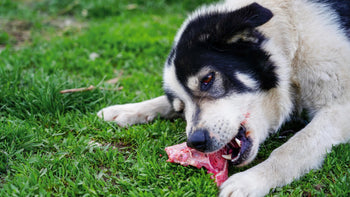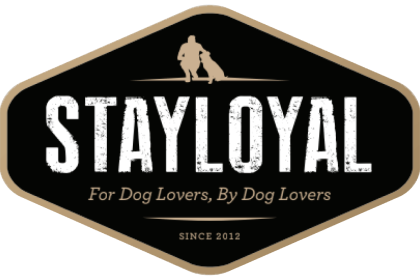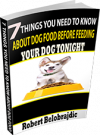Raw Meaty Bones: Nature’s Original Chew Toys

Raw meaty bones, serve as the most natural chew toys, providing essential nutrients, dental health benefits, and mental stimulation. To safely incorporate these beneficial items into your dog's routine, follow these guidelines:
Selecting the Right Bone
Choose non-weight-bearing bones, such as brisket bones or necks, which are softer and less likely to cause dental damage compared to harder, weight-bearing bones like leg bones. These softer options are ideal for safely satisfying your dog’s chewing instincts.
Supervision is Essential
It's crucial to closely supervise your dog the first few times they chew on a raw bone to assess their chewing style. Some dogs may not chew sensibly and could attempt to swallow large pieces quickly or chew too aggressively, which increases the risk of choking or damaging their teeth. If your dog proves to be a sensible chewer who takes their time, you can gradually reduce the level of supervision. However, always be accessible in case they begin to chew in a potentially harmful way.
Choosing the Correct Bone Size
When selecting bones for your dog, ensure the bones are larger than your dog's mouth to minimise the risk of swallowing them whole, which can lead to choking or intestinal blockages. Bones that are too small are easily gulpable and do not provide the same level of mental stimulation or dental benefits as appropriately sized bones. For small dogs under 5kg, suitable options include chicken wings, necks, and small lamb briskets. These are manageable sizes that prevent swallowing risks while ensuring enjoyment and safety.
For large dogs over 20kg, opt for larger bones such as lamb necks and beef brisket, which provide ample size to keep them engaged without posing a choking hazard.
Special Considerations for Dogs with Health Issues
If your dog has health concerns such as pancreatic issues, dietary sensitivities, or is obese, it’s important to tailor their diet to accommodate these conditions. For dogs with pancreatic problems or sensitivities, reduce potential irritants by trimming excess fat from bones before offering them. This step can help manage their condition and prevent exacerbation of symptoms. Similarly, for obese dogs, managing caloric intake is crucial. Offering lower-fat bone options and ensuring portions are appropriate for their diet plan not only prevents further weight gain but also contributes to a healthier overall lifestyle. These precautions ensure that all dogs, regardless of health status, can enjoy the benefits of chewing raw bones safely and healthily.
Disposal of Old Bones
Dispose of any bones that have been left out for several hours, or those that have been refrigerated for more than three to four days. Discarding bones in a timely manner prevents the risk of spoilage and bacterial contamination.
Consultation with Your Vet
Especially for dogs with specific dietary needs or health issues, consulting with a veterinarian before introducing raw bones is advised. Your vet can provide personalised recommendations to ensure that raw bones are a safe and beneficial addition to your dog’s diet.
By following these safety-focused guidelines, you can incorporate raw meaty bones into your dog's diet in a way that taps into their natural instincts while ensuring their health and happiness.








